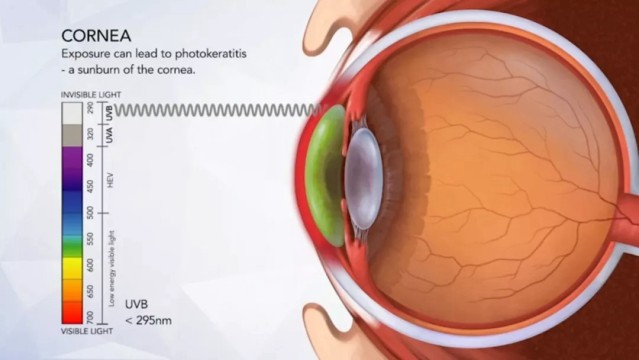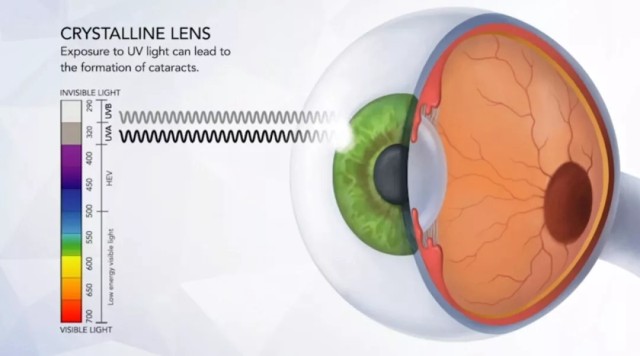
When our eyes are exposed to the sun, in addition to the ultraviolet rays absorbed by the eyelids, the conjunctiva, cornea, aqueous humor, lens, retina and uvea of the eye absorb UV rays.
The cornea is transparent, mainly absorbing ultraviolet light <300 nm, so 98% of the UVB reaching the surface of the eye is absorbed by the cornea and aqueous humor. About 50% of the UVA will go through the cornea and aqueous humor and move on. The next stop is the lens.

The lens is transparent in childhood. As the old age absorbs ultraviolet light, the lens will gradually become cloudy and turn white and yellow. This is the senile cataract, which is why we need cataract surgery.
Because of the different color of the lens in children and adults, the absorption of ultraviolet light is different. Light above 300 nm can pass through the lens of children (peak 380 nm), while light above 400 nm can pass through the adult lens (peak 575 nm).

Therefore, UVA can be absorbed by the adult lens most, but can easily pass through the children's lens to reach the most sensitive and fragile terminal sites - the retina and choroid. Therefore, ultraviolet rays cause more damage to children's eyes.
According to the American Academy of Pediatrics (AAP), about 80% of people's lifetime exposure to sunlight occurs before the age of 18. This will make skin and eye health problems worse in adulthood, so early use of appropriate UV protection (sunscreen, protective clothing, hats and sunglasses) is especially important for babies, children or adolescents.

Therefore, we should wear sunglasses for our children.FLYMOON Kids Cute Heart Shaped Metal Sunglasses, Children Classic Style Plastic Sunglasses both are good choices for your babies!